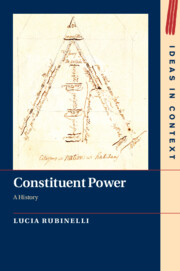Book contents
- Constituent Power
- Ideas in Context
- Constituent Power
- Copyright page
- Dedication
- Contents
- Acknowledgements
- Introduction
- Chapter 1 Sieyès and the French Revolution
- Chapter 2 Constitutional Politics in Nineteenth-Century France
- Chapter 3 The Weimar Republic
- Chapter 4 Constitutional Politics in Post–World War II Europe
- Chapter 5 Arendt and the French Revolution
- Conclusion
- Bibliography
- Index
- Ideas In Context
Chapter 5 - Arendt and the French Revolution
Published online by Cambridge University Press: 28 April 2020
- Constituent Power
- Ideas in Context
- Constituent Power
- Copyright page
- Dedication
- Contents
- Acknowledgements
- Introduction
- Chapter 1 Sieyès and the French Revolution
- Chapter 2 Constitutional Politics in Nineteenth-Century France
- Chapter 3 The Weimar Republic
- Chapter 4 Constitutional Politics in Post–World War II Europe
- Chapter 5 Arendt and the French Revolution
- Conclusion
- Bibliography
- Index
- Ideas In Context
Summary
Hannah Arendt disapproved of all conceptualisations of popular power in terms of sovereignty. This abolished human plurality by prioritising the need to represent the people as a unitary body having a unitary will. By contrast, politics for Arendt had to be structured around a radically different conceptualisation of popular power, and constituent power served precisely that purpose. Arendt thus aimed to rescue the democratic principle of popular authority by presenting constituent power as a radical alternative to the notion of sovereignty. The former was not a conceptualisation of popular power but its practical instantiation. It did not find its origins in the canon of Western philosophy but in the historical practice of people promising and acting together in the public space. By showcasing the plurality inherent to politics, constituent power testified that popular power does not have to disappear once the political order is created, but must be continuously exercised through the state’s institutional structure. This had to be republican, as the exercise of power would be devolved, via federal structures, to local assemblies. In addition, the state’s foundations would be constantly augmented through procedures of collective constitutional revision and amendment. Constituent power thus ends up being, once more, an alternative to sovereignty.
- Type
- Chapter
- Information
- Constituent PowerA History, pp. 176 - 205Publisher: Cambridge University PressPrint publication year: 2020



